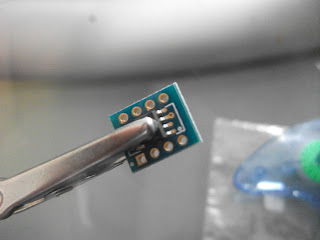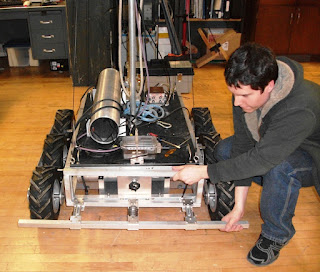I bought a Tamiya track set for a robot similar to my lego rover. Once I had used most of it to build those tracks, I had about 4 inches of track, and some of the small wheels left over. I looped the remaining track into two tiny treads and stuck the smallest wheels I had left inside.
That done, I drilled out the drive wheels to fit the servos, bolted them on, and attached an idler to the opposite side of each with a screw.
Now to power it, I had some cordless phone batteries around, they were each 3.6 volts and I needed about 5, but they were each made for 3 1.2V cells, so I unwrapped and recombined two to make a 4.8V.
Now I had a battery that sat nicely on top, but of course a robot needs a computer, I usually work with pics, but wanting this to be self contained, and shareable, I went with an arduino nano, stuck in a dip socket on top so that I could add accessories, and charge the battery or program the robot with USB.
A zip tie holds it all together, with a cut off bit of eraser between the servos for shock absorption, and it's a robot! I used the servo library to make the control pretty easy. Since the pins stick off the sides adding peripheral involves soldering the wires onto those legs you see sticking out the sides above the battery.
Now to make a swarm of them.
This was an instructables entry last may, it won a prize, see the link if you want details on the build:
http://www.instructables.com/id/Arduino-Nano-based-Microbot/













